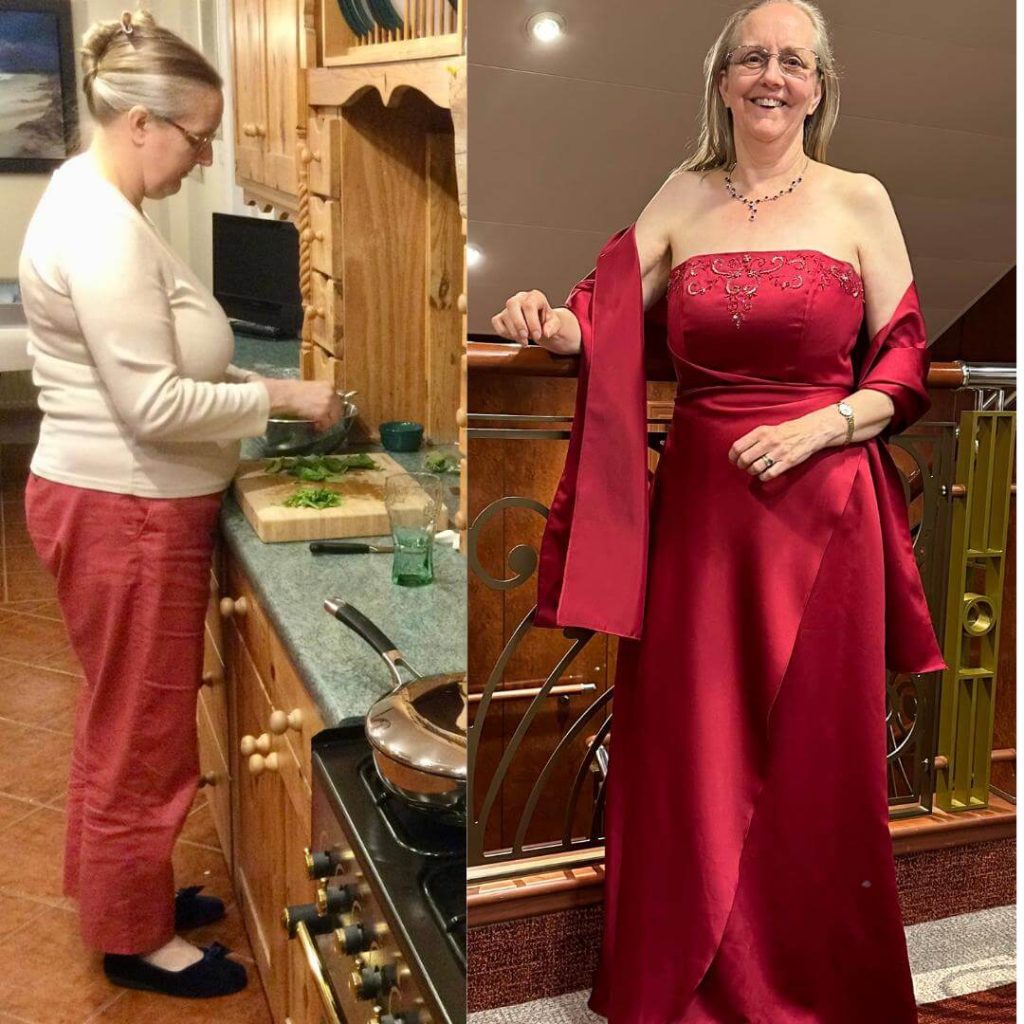You might have noticed your body changing, your arms feel softer, your jeans fit differently, or you’re not as strong as you used to be, even though you’re still exercising. If you’ve found yourself asking, “Why am I losing muscle?” you’re not imagining it, and it’s not just about getting older.
For many women in their 40s and 50s, it can feel like their body is working against them. You might be doing more workouts, eating less, and yet feeling weaker, less toned, and constantly tired.
The truth is, your body changes dramatically after 40, and the strategies that worked in your 20s and 30s no longer deliver the same results.
In this article, we’ll explore why women lose muscle over 40, explain the hormonal changes behind it, and provide detailed, actionable strategies to regain strength, boost metabolism, and feel confident in your body again.

Why You Keep Losing Muscle Over 40
Let’s start by clearing something up. The reason you’re losing muscle is not because you’re lazy, doing it wrong, or past your prime. It’s because no one ever taught you how to take care of a body going through menopause.
Hormonal Changes
One of the biggest reasons for the muscle loss you’re experiencing is hormones. From your 30s onwards, your muscle mass naturally starts to decline and this is a process called sarcopenia.
On average, you lose around 1% of muscle per year from age 30 if you’re not actively doing the right things to prevent it.
Once you reach perimenopause and menopause, the drop in oestrogen, progesterone, and testosterone speeds this up. These hormones play a key role in maintaining lean muscle, bone strength, and metabolism.
As levels fall, it becomes harder to build or even maintain muscle, and easier to gain fat, particularly around the middle.
And not only that but you’ll also start losing bone density and this can be up to 4.4% per year between ages 50–54 if you don’t take proactive steps to counteract it.
Focusing on Cardio Instead of Strength Building
A lot of women assume that the best way to stay lean is to do more cardio like running, cycling, or high-intensity classes. But while cardio can improve fitness, it doesn’t build muscle effectively.
In fact, when done excessively, it can actually burn muscle for energy. Long-duration cardio, like running for more than 30 minutes, can lead to a “deflated” look, less firm and toned, slower metabolism, and accelerated ageing.
High Stress and Cortisol
For many women over 40, the issue isn’t just what exercise they’re doing, instead it’s everything else life is throwing at them.
Between managing a demanding job, supporting teenagers or grown-up children, caring for ageing parents, keeping the household running, and trying to find a moment for themselves, stress often becomes a constant companion.
The problem is, your body doesn’t separate “life stress” from “workout stress.” It responds to both in the same way, by releasing cortisol, the stress hormone. And due to declining oestrogen levels during perimenopause and menopause, your body’s ability to regulate cortisol is far weaker than it used to be.
When cortisol stays high for long periods, it can trigger a chain reaction that works directly against your goals:
- Leptin resistance – increasing cravings for comfort foods and making it harder to control appetite
- Insulin resistance – promoting fat storage around the middle and making fat loss more difficult
- Thyroid dysregulation – slowing down your metabolism and leaving you feeling tired and sluggish
Many of the women we work with in our Fit Over 40 programme describe feeling “stuck in survival mode.”
Nutrition-Only Approach
Some women focus solely on eating “really well” but skip exercise, and while that might have worked in your 20s, it’s not enough after 40.
The bigger problem, however, comes from extreme dieting. Starvation diets or cutting out carbs might seem like a quick fix, but they actually spike cortisol.
Cortisol levels rise more sharply in women as they age, and when they stay high for too long, they can trigger what we call the Weight Gain Triangle: increased cravings, easier fat storage around the middle, and a slower metabolism.
For women over 40, the solution is finding your nutrition sweet spot which means eating enough to avoid over-stressing the body, but still creating a small calorie deficit to lose 1–2lbs per week consistently.
This is what we call Hormonally Balanced Eating, and it’s how we calculate nutrition for every client inside our Fit Over 40 programme, based on their stage of menopause, dieting history, and body composition.
Joint Pain and Injuries
Many women over 40 also begin experiencing joint discomfort in their knees, hips, back, or shoulders. Hard-impact exercises like running, jump squats, or burpees put a huge strain on the joints (running, for example, puts 4x your bodyweight through each knee).
Injuries slow down progress and force you to move less overall, which can reduce calorie burn and accelerate muscle loss even further.

“I was 10 stone 4.8 when I started my Trinity journey, I felt constantly bloated, sluggish and never had any energy. I had tried to take up running again to try and shift some weight but it was a lot harder than previous times and eventually gave up due to pains in my knee. I cannot put into words exactly how much of a positive impact Trinity has made on my life. I’m now a lot healthier and fitter and feel amazing. I have lots of energy and no longer feel like a beached whale when I’m trying to move. It has helped with all the little aches and pains that I used to get. I’ve lost over 2 stone, something which I never thought possible. I joined Trinity as a last ditch attempt to make a change, never thinking it would work this well!”
– Tracy White (49), Trinity Client
What To Do To Gain Muscle (And Maintain It)
1. Strength Training 3-4 x Per Week
Strength training is the cornerstone of maintaining and rebuilding muscle after 40. Lifting weights or using resistance exercises stimulates muscle protein synthesis, which naturally declines with age.
It sends a signal to your body that muscle tissue is needed, preventing further loss and even rebuilding what has been lost. It also improves bone density, balance, and posture, which supports daily movement and reduces injury risk.
And the best part is that you’ll gain lean muscle, increase your metabolism, tone your body, and improve energy levels. Daily life becomes easier and things like climbing stairs, carrying groceries, and keeping up with family activities feel more manageable.
You don’t need hours at the gym. Short, focused sessions of 30–40 minutes, 3–4 times per week are effective. Focus on compound movements like squats, lunges, rows, presses, and deadlifts.
Adjust weights and repetitions (5–15 reps) based on your strength, aiming to challenge your muscles without causing strain.
2. Eat Enough Protein
Protein is essential for muscle repair and growth, but as women age, the body becomes less efficient at using protein. This means higher intake is needed to maintain muscle.
It provides the amino acids necessary for muscle tissue repair. Without enough, your body can’t rebuild muscles effectively, even with strength training. Protein also supports metabolism, fullness, and overall energy.
Aim for 25–30 grams of protein per meal, spread throughout the day. Build meals around protein first, then add vegetables and carbohydrates.
Examples include Greek yogurt with berries for breakfast, a chicken or tofu stir-fry for lunch, and salmon with roasted vegetables for dinner.
Track your intake to ensure you meet your protein goals, adjusting for body weight and activity level.
3. Manage Stress and Recovery
Since the way your body handles stress changes after 40, recovery becomes just as important as the workouts themselves. Make time for restorative activities like walking, stretching, yoga, or meditation.
Prioritise ‘me time’. This can be as simple as having a nice relaxing bath or reading a book but the key is taking some time out purely for you and for no-one else.
4. Prioritise Your Sleep
Sleep plays a far bigger role in muscle growth and fat loss than most women realise. When you don’t get enough rest, your body produces more cortisol which breaks down muscle tissue and encourages fat storage, especially around the middle.
On top of that, sleep is when your body repairs muscle after strength training. Without it, recovery slows down, energy levels drop, and results stall. That’s why improving both sleep quality and quantity is one of the fastest ways to see better progress.
Inside Trinity, we help women optimise sleep through hormone balance, nutrition, caffeine timing, and stress management.
Once their sleep improves, cravings reduce, recovery speeds up, and they finally start building the lean, toned body they’ve been working for.
5. Be Consistent and Get Accountability
You don’t need to live in the gym to see results. Our clients typically do 3–4 LIST sessions per week (30–40 minutes each, from home) and lose 1–2 stone every 12 weeks, without needing to do cardio.
Without someone checking in to say, “Did you do what you said you’d do?”, it’s easy to lose momentum after a stressful day or tough week.
It’s easy to fail in private, because there are no immediate consequences. Just like how you show up to work because your boss or colleagues would notice if you didn’t, you need the same structure for your health.
That’s why every woman in our Fit Over 40 private coaching programme is paired with a dedicated coach who checks in weekly. If a client misses a check-in, we reach out immediately to see what’s not working and get them back on track.

“At the end of 2022 I’d reached my heaviest ever (more than when I was pregnant), had a very limited range of clothes that fitted (and wasn’t prepared to buy larger sizes), and generally felt miserable. I was working ridiculously long hours, eating poorly, and sleeping badly and I constantly felt grumpy, snappy and tearful. Since joining Trinity, I have lost more than 50 lbs (3 st 8 lbs) I am slimmer, but more importantly feel fitter, healthier and happier. For the first time ever I am enjoying exercise. Trinity’s programme has helped me achieve weight loss goals but so much more!”
– Hilary Burdett (58), Trinity Client
How Trinity Can Help You
At Trinity, we’ve helped over 7,000 women over 40 regain muscle, lose weight, and feel confident again, with a 97% success rate. Unlike quick fixes, fad diets, or weight loss jabs, our program is a long-term, science-backed approach to re-educating your body and lifestyle.
We provide personalized coaching that considers your unique hormonal profile, body composition, and lifestyle.
- Personalised coaching tailored to your hormones, body, and lifestyle
- A proven training plan combining strength and LIST (low-impact steady training) workouts
- A nutrition strategy that prioritises protein and supports fat loss without restriction
- Hormone and stress management tools to balance cortisol and boost energy
- Weekly accountability check-ins with your coach to keep you consistent and motivated
With Trinity, you’ll gain strength, energy, and confidence, and finally feel comfortable in your body again. Women in our Fit Over 40 program consistently drop 1–2 dress sizes in 12 weeks, reduce aches and pains, and regain the vitality they thought was gone.
Join the 1000s of women who have realized their best years aren’t behind them, they’re just beginning.
Frequently Asked Questions
How do you regain lost muscle?
You can regain lost muscle by lifting heavy weights 3–4 times per week, eating enough protein, and ensuring you recover properly with good sleep and balanced stress.
How do I stop my body from losing muscle?
Focus on strength training, eating a protein-rich diet, and managing stress, especially during menopause when hormone changes accelerate muscle loss.
How can I prevent muscle loss after 40?
Prioritise low-impact strength training, eat sufficient protein, get 7–8 hours of sleep a night, and avoid long-duration cardio that burns muscle rather than building it.
Why am I losing muscle instead of fat?
This often happens when you do too much cardio, eat too few calories or too little protein, or have high cortisol levels from stress and poor sleep.




